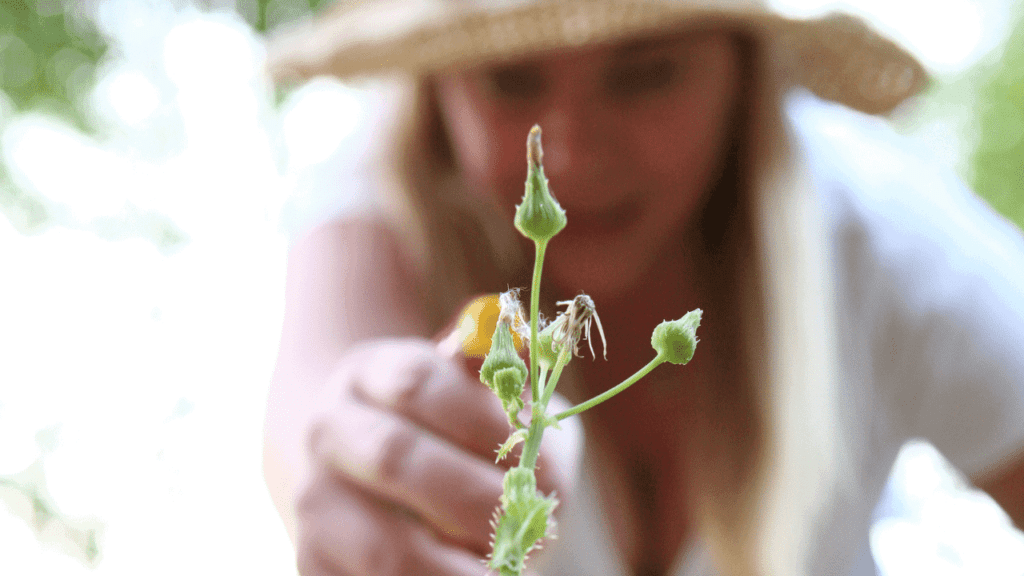Do you love growing flowers and vegetables in your garden, but you don’t like the tedious work of weeding from time to time?
Then learning how to use the Preen Natural weed preventer can help keep your garden free from unwanted weeds for about four weeks.
Indeed, growing vegetables in your garden are not only fun but also nutritious.
However, weeds can rob your crops of essential nutrients, water, and space for better sunlight penetration.
Besides, weeds can also encourage the breeding of pests and other diseases.
Preen Vegetable weed is the solution to having a weed-free vegetable garden.
Table of Contents
Is Preen effective in controlling Vegetable garden weeds?
Are you aware that Preen effectively controls weeds in your vegetable garden or flower bed?
For Preen to effectively control the weeds, as mentioned above, you need to use it in the right quantities and at the right time.
Preen is an emerging herbicide that can selectively kill germinating seedlings but will leave the already established vegetable seedlings and even growing weeds.
Spreading your Preen uniformly over the soil results in forming a chemical barrier that prevents underground seedlings from emerging once watered.
To make Preen even more effective, you have to spread it, preferably after planting your vegetable or flower seedlings.
This is because applying it before the planting process disrupts the chemical barrier, which means weeds will find a way of growing..
It is essential to understand that Preen, just like other Pre-emergent herbicides, can kill your vegetable or flower seeds if applied over them.
For instance, seedlings such as lettuce, beans, and carrots are typically sown directly into the soil, and this means Preen can kill them before they sprout.
Therefore wait for one to two weeks to allow the seeds to emerge and establish before applying Preen.
The active ingredient in Preen is corn gluten, which is obtained after milling corn.
Typically, corn gluten has chemical properties that inhibit the germination of seeds.
Once applied, Preen will keep away weeds from your vegetable garden for about a month.
It has to be noted that Preen isn’t ideal for killing weeds but instead ideal for preventing the sprouting of weeds.
Below are simple steps on how to use Preen in a vegetable garden.
How to Use Preen in a Vegetable Garden
Step one using Preen
Remove or kill the already sprouted weeds from your garden.
Weeds could have already started sprouting in your garden and must be terminated before you can apply Preen.
There are several methods you can apply to kill weeds in your garden.
They include but are not limited to watering weeds with boiling water, using a concentrated vinegar solution to wither weeds, or using a highly concentrated salt solution on the weeds.
Be cautious with the method you decide to use not to affect your crops later.
For instance, vinegar used in killing weeds is far much concentrated than kitchen vinegar.
It is typically acetic acid, which means that you have to be careful when applying it.
Highly concentrated vinegar can negatively affect your soil pH balance, affecting your vegetables or flowers.
Besides, sowing salt into the soil can kill any weed in your garden, but you should apply it with care to avoid high salt solution concentrations that can percolate to reach the groundwater.
Although the above methods of dealing with existing weeds are useful, they seem to have other consequences.
The question is, which is the best way of eliminating existing weeds?
I highly recommended removing weeds manually. Yes, you can handpick or dig them up using gardening tools.
In both cases, ensure to uproot the weed to avoid seeds sprouting within a few days.
Because disturbing the soil helps to bring those dormant seeds of the weed on the surface where germination can quickly occur.
This is clearly what you don’t want to happen.
Step two
Now that you are done removing the existing weeds, it is the right time to prevent future weeds from developing.
All you need is to open your Preen veggie applicator and start sprinkling your corn gluten grains over the mulching or directly over the soil.
Once you are done applying the Preen granules, you can now apply water.
You are now almost done, and you can soon enjoy a weed-free flower/ vegetable garden.
You can re-apply your Preen weed preventer after two to three days.
Essential Tips to Keep in Mind When Using Preen
In case you plant seeds in your garden, you must wait until they establish to be about 3- 4 inches in height before you can apply Preen Veggie.
You can apply Preen Veggie when using pre-started plants or after they reached the mentioned height.
However, avoid sprinkling near the planting holes.
It is highly recommended to treat the soil you are going to plant using compost manure.
This is because it has lots of nutrients needed by your plants when growing.
The Preen Vegetable weed preventer will perform best in soils treated with compost.
Ensure to read the instructions on the product’s packaging.
Yes, to achieve the best results in your garden, ensure to follow the instructions.
Although early spring is the ideal time to apply Preen for the first time, you can use it at any time.
Ensure to place granules in the right proportion; ideally, apply a quarter of a coin in each hole.
Make sure that your garden is dry before applying Preen granules.
This is because granules can easily stick on the wet leaves, resulting in leaf damage.
But equally, ensure watering your garden after applying Preen since water activates Preen and makes sure that it is most effective.
Do not allow pets and kids to disrupt the garden after applying your Preen.

